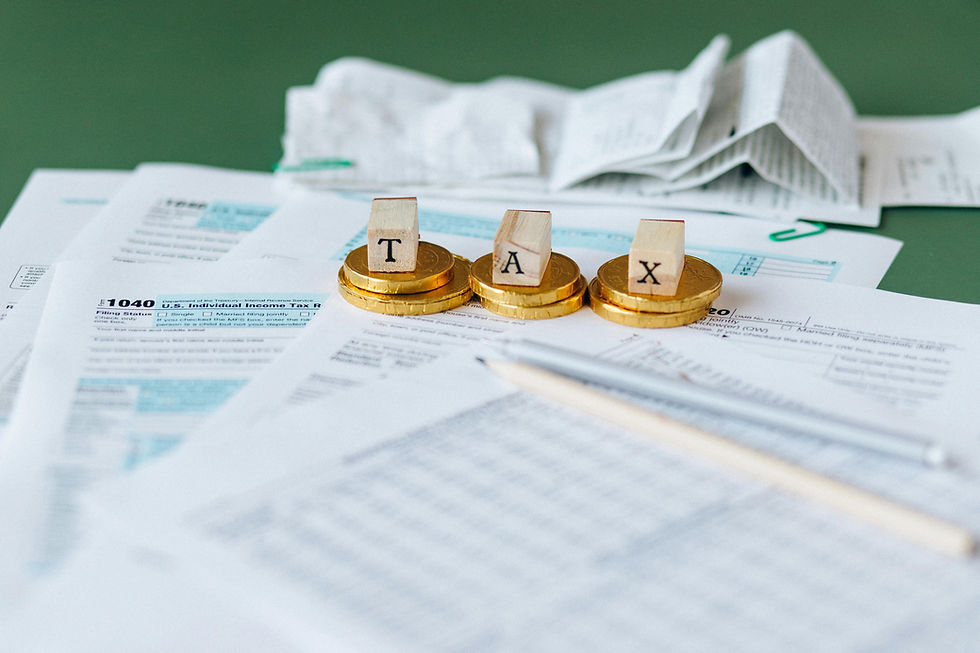Fiscal Policy: How do government spending and taxation influence economic activity?
- Aryan Maheshwari
- Mar 6
- 4 min read

By Aryan Maheshwari
What is fiscal policy?
Fiscal policy is the use of government spending and taxation to influence a government's economic activity. Economic activity refers to the production, consumption, and distribution of all the goods and services in an economy. There are two major ways in which a government intervenes in markets, government spending and taxation. Government spending is the spending done by the government in order to meet the social and economic objectives. An example of government spending is the funding of public goods such as healthcare, education, and national defense. Taxation is the primary form of government revenue, it includes direct and indirect taxes. The three forms of taxes are progressive, regressive, and proportional. Progressive tax is a tax system in which the tax rate increases as the income of the taxpayer increases. Regressive tax is a tax system in which the tax rate decreases as income of the taxpayer increases. Proportional tax is a tax system in which the tax rate levied to all taxpayers is constant, regardless of their income.
Types of fiscal policy
There are three types of fiscal policies in India: Expansionary, Contractionary, and Neutral Fiscal policy. Expansionary Fiscal policy is when the government increases government spending and/or cuts taxes in order to increase the aggregate demand in an economy and achieve economic growth. Contractionary fiscal policy is when the government decreases government spending and/or increases taxes in order to reduce the aggregate demand in an economy, slowing down the economic growth. Lastly, neutral fiscal policy is when the government balances its spending with the tax revenue.
How does expansionary fiscal policy influence economic activity?
There are two scenarios of the Expansionary Fiscal policy: reducing tax rates and increasing government spending. If the government reduces income tax rates, consumers will have a higher disposable income, that is, the income left after the payment of all the taxes. As consumers have a higher disposable income and the inflation rate is stable, their purchasing power will increase, enabling them to increase their spending. Higher consumption will mean there is more aggregate demand in an economy, and producers are willing and able to supply more, increasing the economic growth in an economy. If the government increases its spending on goods and services, such as infrastructure and social programs. Consumer spending will increase, and aggregate demand in the economy will increase, this will result in increased supply, and therefore increased production and economic growth.
How does contractionary fiscal policy influence economic activity?
There are two scenarios of the Contractionary Fiscal policy: increasing tax rates and reducing government spending. If the government increases income tax rates, consumers will relatively pay more of their income to the government, therefore their disposable income will reduce, which results in them saving and not spending, decreasing aggregate demand in the economy. As aggregate demand reduces, suppliers will reduce their supply for goods and services in the market, reducing production and slowing down economic growth. If the government reduces their spending, aggregate demand will decrease, and therefore suppliers will reduce their output. When output is reduced, firms will not require as much labour force and will lay off employees, resulting in unemployment in the economy, which reduces economic growth and keeps inflation stable.
COVID-19 and India's fiscal policy
A real-world example of India using fiscal policy is in response to the global pandemic, COVID-19, in 2020. In May 2020, India declared a 20 lakh crore rupees stimulus in the economy. They increased spending by about 10% of their GDP. This policy helped various sectors who were struggling because of the pandemic, including agriculture, MSME (micro, small, and medium enterprises), and the informal sector. This stimulus included merit goods such as free food grains for the below poverty line, direct cash transfers in the form of subsidies and transfer payments, and loans to the MSME business so that they stay in the market.
In May 2020, the Indian government also increased the direct funding to the financially struggling sector in the economy such as farmers. This gave farmers incentive to continue to work and produce goods and services for the economy. This was done through the PM-GKAY (Pradhan Mantri Garib Kalyan Anna Yojana). This yojana provided free food grains for over 80 crore people.
In May 2020, the Indian government reduced the tax rate. This gave consumers more disposable income and, therefore, more consumption, leading to higher output produced by producers and economic growth. They also implemented the Pradhan Mantri Garib Kalyan Yojana, which offered tax-free withdrawals from EPF accounts.
All these measures had a significant impact. They helped reduce the economic recession from the pandemic, which provided confidence to the people of the country. They provided to the people in need and started economic recovery quickly. This made India more internationally competitive as well.
By using expansionary fiscal policy and increasing government spending and providing subsidies to the firms, the Indian government fought back the pandemic and used fiscal policy measures for price stability in the time of an unpredictable crisis.
Bibliography
https://www.imf.org/en/Publications/fandd/issues/Series/Back-to-Basics/Fiscal-Policy
https://www.economicshelp.org/blog/617/economics/impact-of-expansionary-fiscal-policy/
https://www.jaroeducation.com/blog/fiscal-policy-in-india-objectives-tools-importance/
https://www.investopedia.com/terms/e/expansionary_policy.asp



Question is govt spent on subsidy or Direct money transfer, from where this money comes